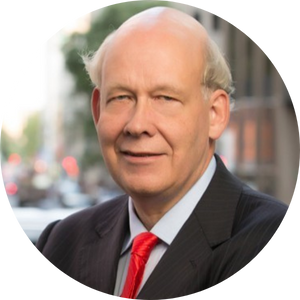In today’s fast-changing world, Gen Z have an important role to play in developing strategy.
Today’s world is more turbulent than ten years ago. From climate change, to diversity, equity and inclusion, Ukraine, the ever-growing importance of China, the morphing of globalization, inflation and the rise of Gen Z, the world in which we operate is changing. Thus, how we do strategy must change.
Two key schools of strategy
There are two big schools of strategy. The dominant one in years gone by, and still important, is Harvard professor Michael Porter’s deliberate strategy. It is a top-down, one-size-fits-all approach; it is often developed using consultants like McKinsey or BCG, with the rest of the organization expected to do little more than salute and follow the resulting strategy. It can be, at times, a rearview mirror. Yet it has its place: when it comes to decisions like what kind of fleet an airline should buy, say, that is a multi-billion dollar decision for the chief executive and C-suite to make with the board’s blessing.
The other school of strategy is my colleague Henry Mintzberg’s emergent strategy. Here, strategy is not created by senior management: rather, their job is to spot good ideas from throughout the organization, then resource, support and scale-up those that have proven successful with customers, suppliers and other stakeholders in today’s world, not yesterday’s. This real-world feedback makes sure that the focus is on relevant ideas and winning approaches.
Companies pursuing this approach seek to be agile, quick to pivot in response to new circumstances: as things change, frontline people solve the problems that emerge, whether for customers, suppliers or others. From their solutions, new approaches arise, which can help the organization shift to a new strategy that is better aligned with their reality.
I have spoken to hundreds of chief executives and it is clear that both approaches are used, often in the same organization. But in today’s increasingly uncertain world, the balance is tipping toward the emergent school of strategy. Consequently, to develop strategy effectively, older people – the people generally in charge of things – must pay greater attention to front-line troops: those who know what is going on in our turbulent world, who deal with customers, suppliers, communities and their fellow newer employees. That means a greater role for Gen Z in shaping strategy.
Fighting old battles
One problem faced by Boomers and Gen X-ers when leading younger generations is an issue captured by a famous military saying, that “generals fight the battles of their youth.” General Martin Dempsey, the former chairman of the Joint Chief of Staff of the US military, told me his story about this saying. When he was a pup lieutenant out of West Point, he commanded a tank in the Cold War. As a young officer, he learned about leadership and strategy both through his own experience and from majors and colonels who shared lessons from their own youthful experiences in the Vietnam War.
Dempsey became a general during Desert Storm. He told me that what he had been taught by those Vietnam veterans was, for the large part (though not entirely), irrelevant for Desert Storm. While just a short time later, battle had changed significantly, a result of new technology, new enemies and a new generation of young soldiers. Much had to change in General Dempsey’s leadership and tactile strategy in order to win.
The same is often true in business. Executives must not fight the battles of the past, but today’s battles. To that end we must pay more attention to Gen Z and younger Millennials. We older people have the great advantage, and disadvantage, of long experience, while they have the advantage of carrying little, if any, baggage from the past. Younger people are more apt to be boundary spanners – that is, people with one foot in the real world of our customers, suppliers, frontline employees and other stakeholders, interacting with them daily. The turbulent world outside our organization tosses up real-world problems to boundary spanners, who often work in teams across our organizations’ functions to come up with new and somewhat novel solutions. It places them ideally to contribute to strategy.
This underlines the job of senior management, not to have the ideas so much as to spot and scale the best ideas to create strategies that match today’s world. Anyone can be a strategist – though it is senior management who decide which of the many possible strategies that might arise are to be pursued.
Incorporating Gen Z’s ideas
How then can organizations elicit Gen Z’s ideas and contribution to strategy? One approach is that of a shadow board, which typically consists of between nine and 13 people from a cross-section of the business, all of whom are younger – either Millennials or Gen Z-ers. The chief executive usually sponsors the shadow board and its primary purpose is to provide insight, feedback and ideas to senior decision-makers in the company, representing their generation’s perspective on strategy. Shadow board members also learn about the company’s strategy and decisions – insight that they can share with their peers and network within the organization, thus creating broader support for strategic initiatives.
It is an increasingly popular approach. A 2022 Harvard Business Review article by Jennifer Jordan and Mahwesh Khan discusses how companies as diverse as Mövenpick Hotels & Resorts, Deloitte Africa, law firm Shakespeare Martineau and French energy giant TotalEnergies have used shadow boards to improve their strategies, while according to a 2023 Insider article, management consulting giant Oliver Wyman says its shadow board helped contribute to a 30% reduction in attrition in 2022.
Our organizations and their strategies must evolve, and fast. People under 30 are important to help us get to where we should be, pivot more quickly than in the past, and remain relevant to today’s world. We older people are, by and large, still in charge – but we must be much better listeners than in the past.




